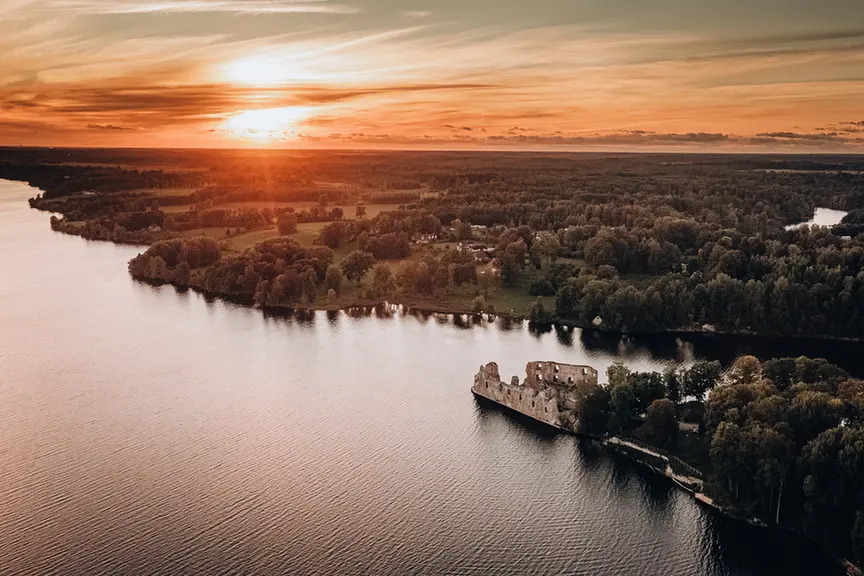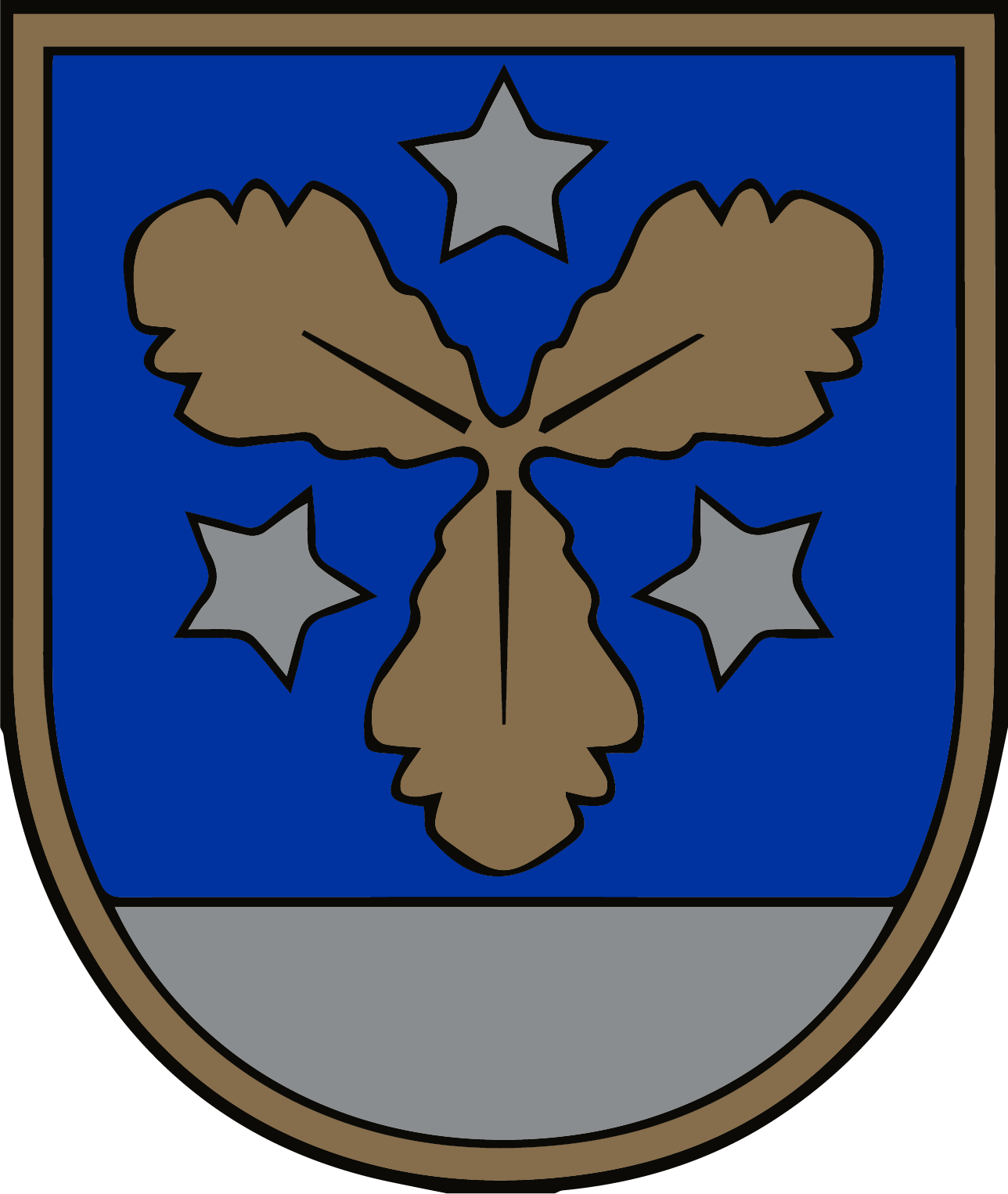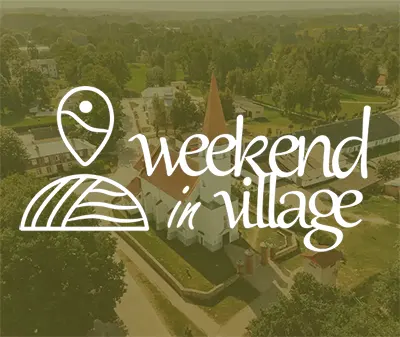
Daugavos ir Pērses slėnis prie Koknesės pilies griuvėsių
Kokneses parks, Koknese, Aizkraukles novads, Latvija, LV-5113In Koknese, the Daugava and Pērse rivers meet, and their confluence stands as a testament to how the interaction between nature and humans shapes both the landscape and the story of history. Standing by what was once the castle’s dry moat, with the Pērse flowing to the right and the Daugava stretching into the distance on the left, the two rivers may appear to be of almost equal size.
However, earlier generations standing in this same place would have seen a very different scene — the powerful Daugava and the picturesque, lively Pērse. The rivers once flowed through a deep, scenic valley with sandstone outcrops, dramatic cliffs, and rocky formations.
When the Pļaviņas Reservoir was created in 1965, the water level rose by nearly 40 meters. The Koknese Castle ruins, which once stood high on a hill, were brought right to the water’s edge. The cliffs, rapids, the Pērse waterfall, and the ancient river valley disappeared beneath the surface.
At that time, the Pērse was a small river, shallow enough that one could hop across the stones and reach the opposite bank — the Bilstiņi side. The Pērse ravine was wider than the river itself, which meandered from one side of the ravine to the other.
- Aizkraukle municipality and Koknese tourism information centre
1905. gada iela 7, Koknese
(+371) 29275412, (+371) 65161296 - Aizkraukle tourism information point
Lāčplēša iela 4, Aizkraukle
(+371) 25727419 - Jaunjelgava tourism information point
Jelgavas iela 33, Jaunjelgava
(+371) 27366222 - Plavinas tourism information point
Daugavas iela 49, Pļaviņas
(+371) 22000981 - Skrīveri Tourism Information Point
Daugavas iela 85, Skrīveri, Skrīveru pagasts
(+371) 25661983 - Staburags tourism information point
Staburaga saieta nams, 2. stāvs, Staburags, Staburaga pagasts
(+371) 29892925 - Nereta tourism information stand
Dzirnavu iela 5, Nereta, Neretas pagasts
(+371) 26674300 - Mazzalve tourism information
Skolas iela 1, Ērberģe, Mazzalves pagasts
(+371) 26156535 - Irsi manor barn - magazina
Irši, Iršu pagasts
(+371) 26344757










